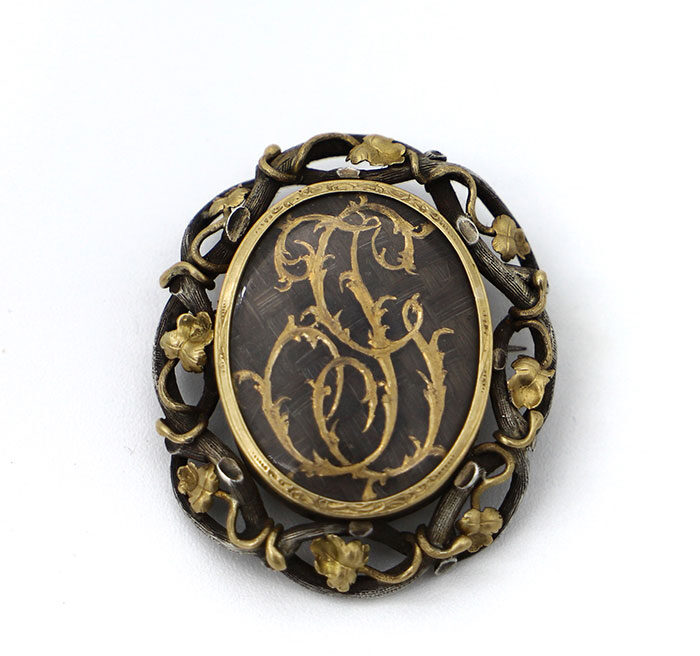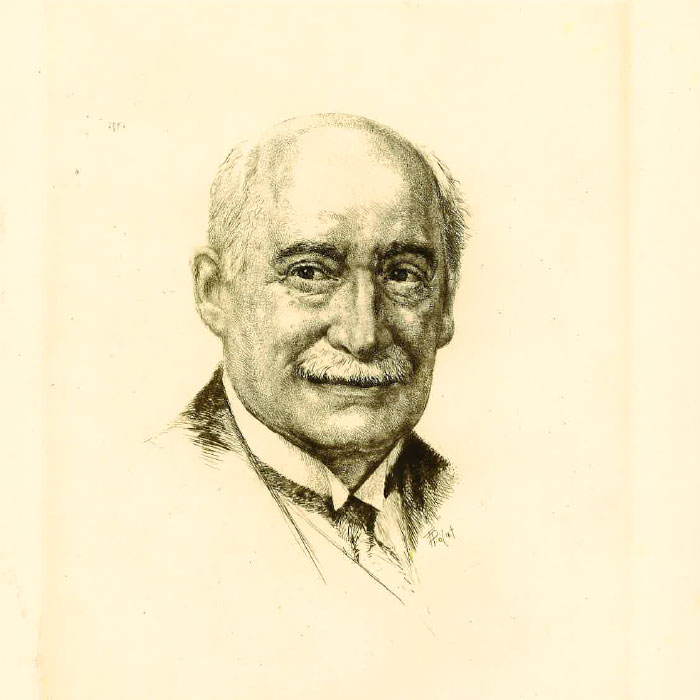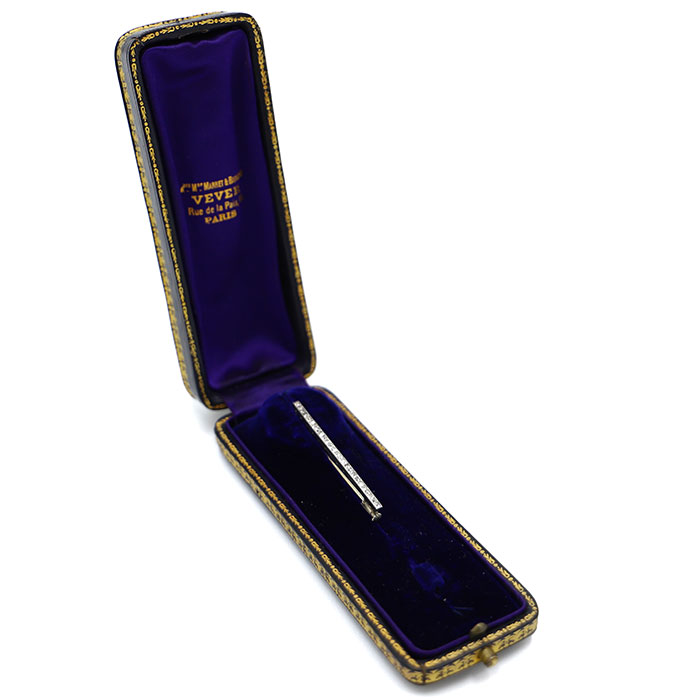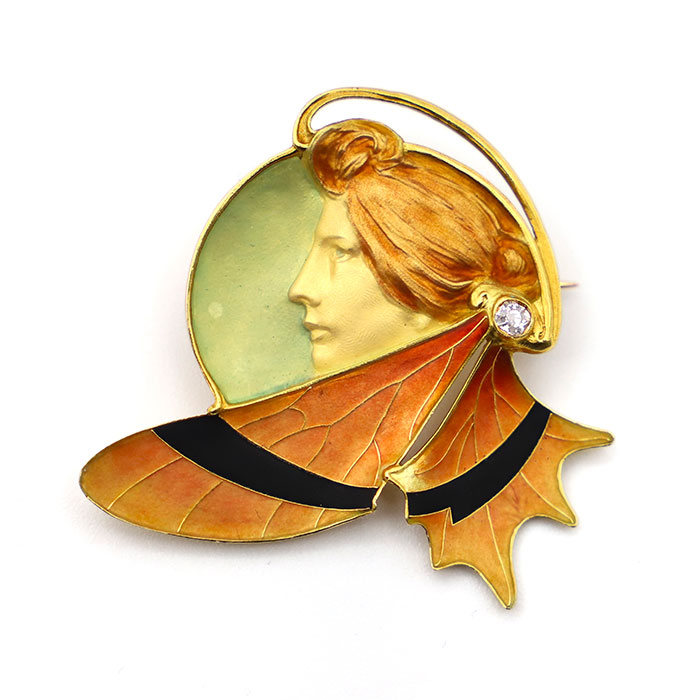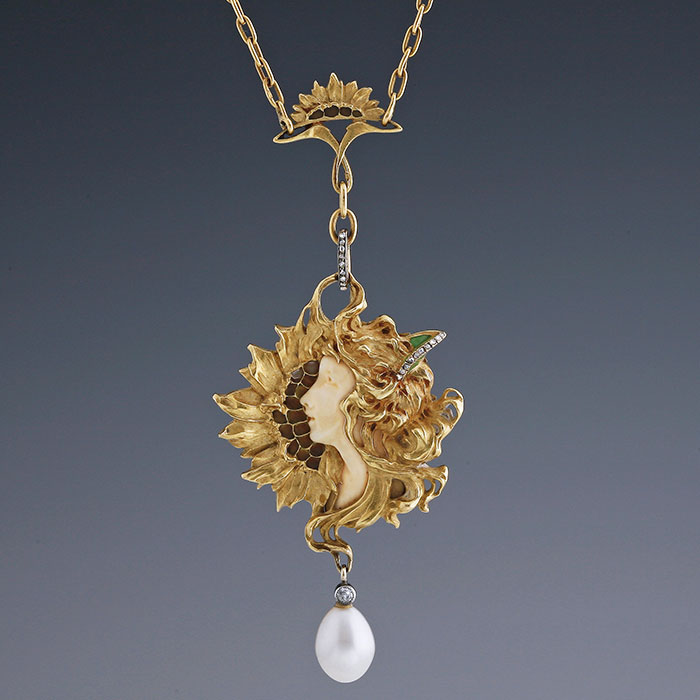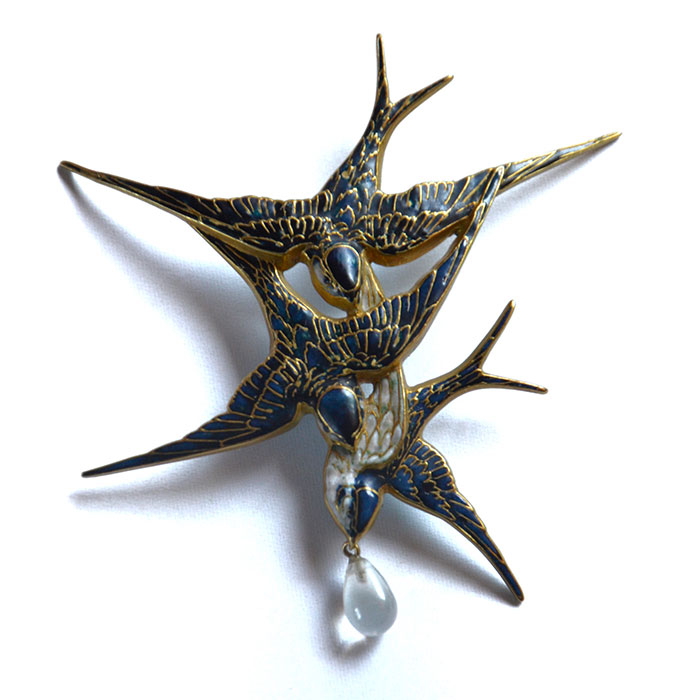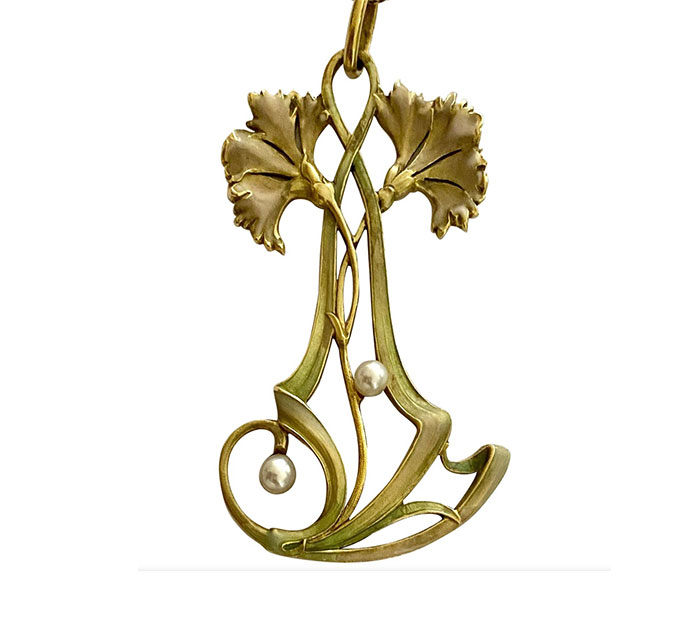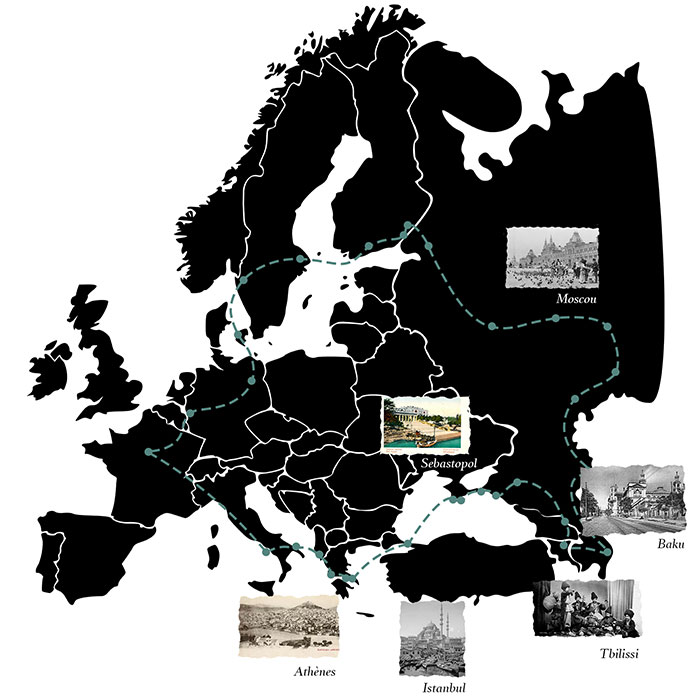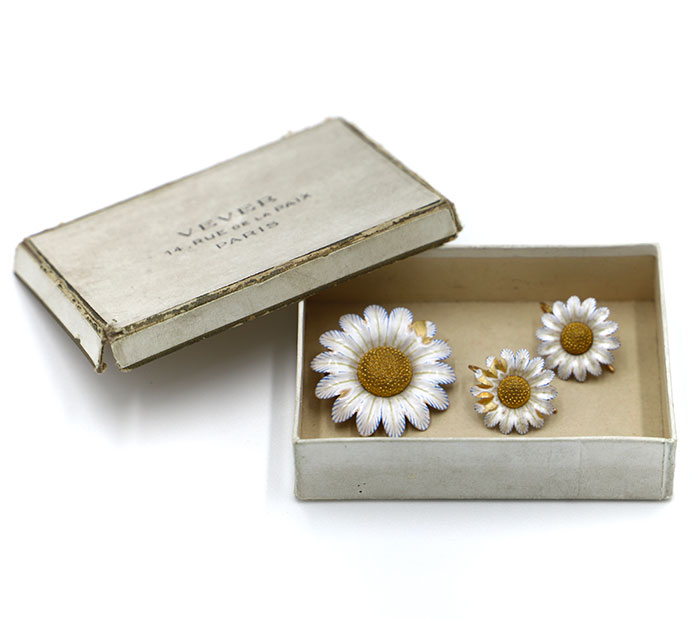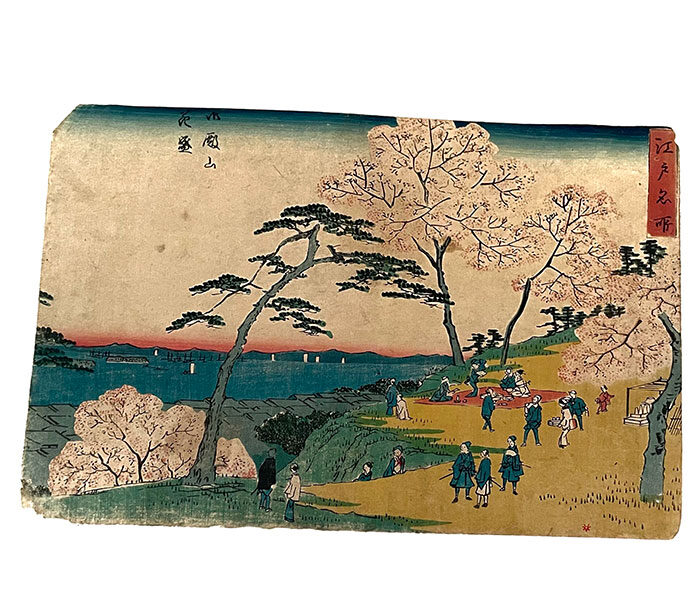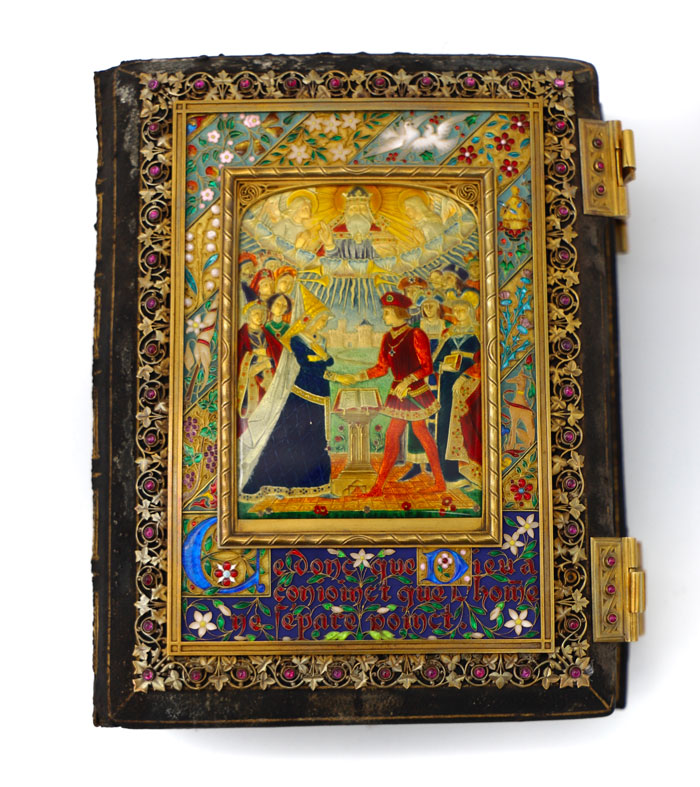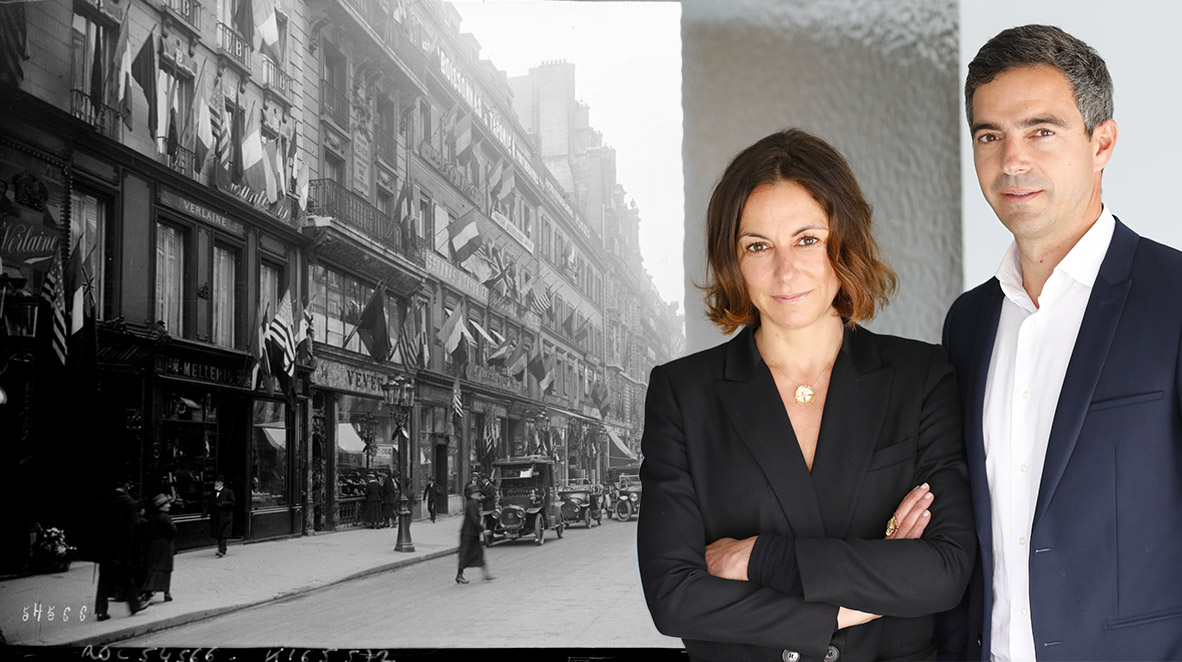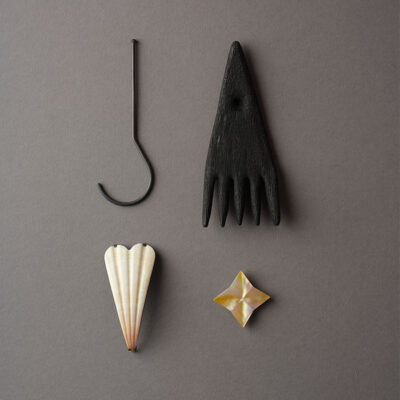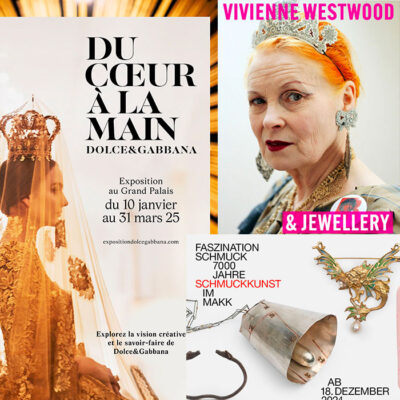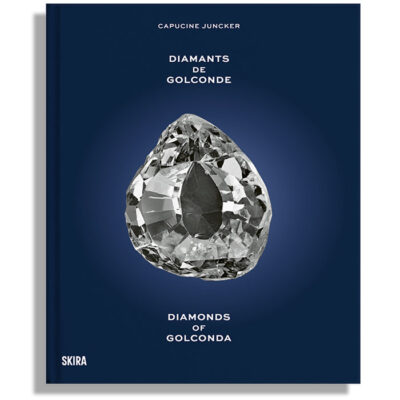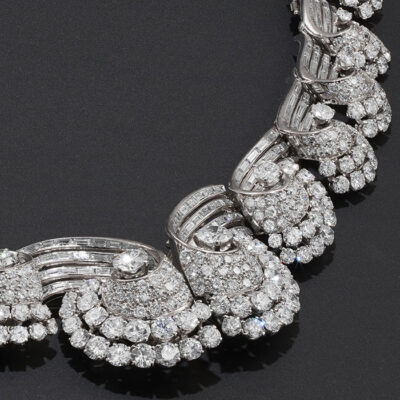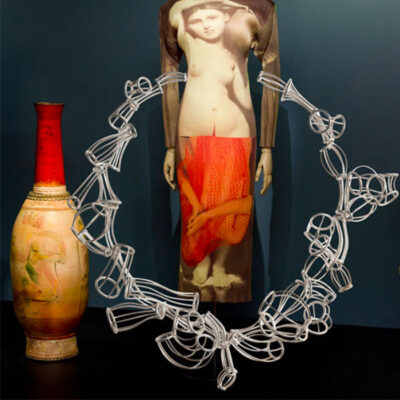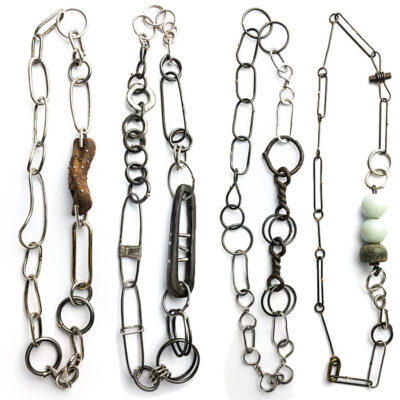My agenda
28 May 2023
Share
The “Dans l’intimité de Vever ” exhibition at 9 rue de la Paix
“Dans l’intimité de Vever “. This chronological and thematic exhibition, a world away from the major institutions, is brought to you by Camille and Damien Vever, representatives of the 7th generation of the Vever family and offers an insight into the men of this true jewelry dynasty.
By Sandrine Merle.
Camille and Damien Vever, who resurrected the brand just two years ago, trace its history through 60 pieces of jewelry and objets d’art. The exhibition covers two centuries of jewelry creativity from 1821, the date of the company’s founding in Metz, to the present day, with a focus on the company’s heyday in the early 20th century. In Vever’s showroom, transformed for the occasion into a cabinet of curiosities, the jewels stand alongside watches, paintings, medals, cameos, prints and books. All or almost all of them come from descendants, heirs and some collectors. It’s a unique opportunity to discover the human side of this house.
The first of the Vever dynasty
A piece of jewelry from 1860, a hair mourning brooch, harks back to Ernest (son of the founder Pierre-Paul) and the beginnings of the company in Metz. At the time, the company’s activity was mainly directed towards the clergy and the army, for whom it made a number of holy water fonts and lead soldiers. The exhibition reminds us that it is only from 1871 that Ernest, found here in the form of a bronze statue, grew the jewelry business. Indeed, he settled in Paris (following the annexation of Alsace-Lorraine by Prussia) and bought the Beaugrand’s jewelry shop, supplier of Napoleon III. Note the front of Vever at 19 rue de la Paix in an original photo. Another brooch dates from the Art Deco period. Apart from these two pieces, all refer to the Art Nouveau movement, a period when the Vever brand was at its peak.
Henri Vever and Art Nouveau
At that time, Henri Vever (the central character) was in charge, with his brother Paul. At the time the company was even better known than Cartier! We discover its excellence in design and technicality with a collection of combs, pendants and brooches with sinuous lines in enamel, ivory representing carnations, swallows, women dragonflies, winged or hybridized with a sunflower. At the same time, Henri Vever continued to create diamond jewelry such as the barrette given to Camille Vever by her grandmother for her 16th birthday; the piece of jewelry that triggered her desire to relaunch the brand. Another surprise discovery is an enamel daisy set by René Lalique, created for Henri Vever’s daughter, with the same first name. “René Lalique was an apprentice at Vever and then a designer. Henri recognized his immense talent while noting how unwearable his jewels were. There was certainly a little envy … “, explains Camille Vever.
Vever, putting the Nouveau back into Art nouveau
But who was the real Henri Vever?
Objects and works of art testify to the personality of Henri Vever. He was a painter trained by Gérôme, a bibliophile, a lover of Islamic art and a tireless traveler who made a long journey (reconstructed on a map) to Moscow. He is the author of articles on jewelry and the reference work in three volumes “La Bijouterie Française du XIXe siècle”. His personal pieces, those he held in his hands, are on display. A compulsive and high-level collector, he amassed fabulous sets of impressionist paintings, glyptics, Persian miniatures, coins and Japanese objects. To give an idea of the extent of his collections, Camille has assembled tsubas (Japanese sword guards), ivory statuettes, a catalog of the sale of his impressionist collection and the book of hours with its enameled cover by Étienne Tourrrette. An object worthy of entering the museum.
The exhibition finally puts the “Empress” pendant and the “Ginko” ring in perspective with these 60 pieces. The perfect way to reaffirm the family line.
“Dans l’intimité de Vever – Bijoux et Objets d’Art depuis 1821” from 1 June to 7 July 2023 (extension until August 12th) – 9 rue de la Paix, Paris


